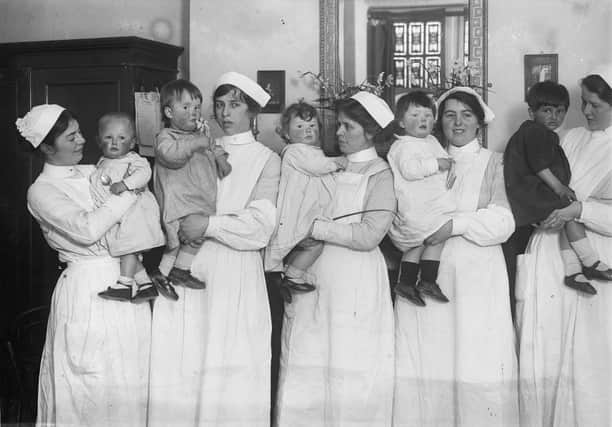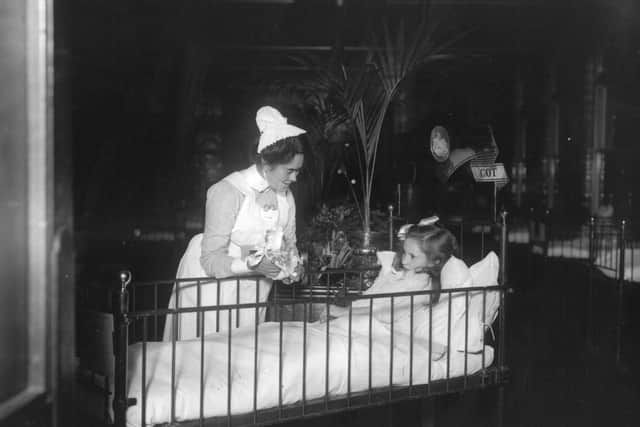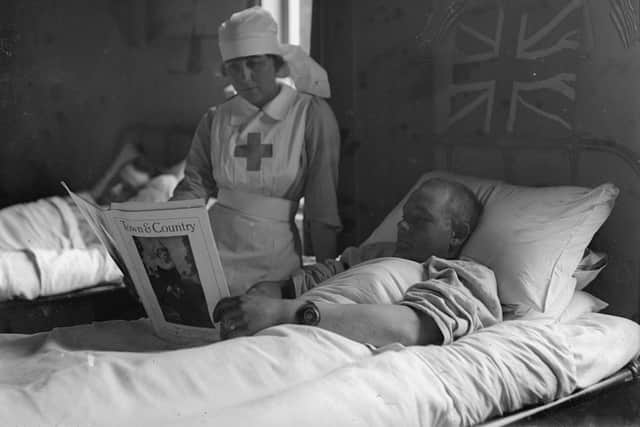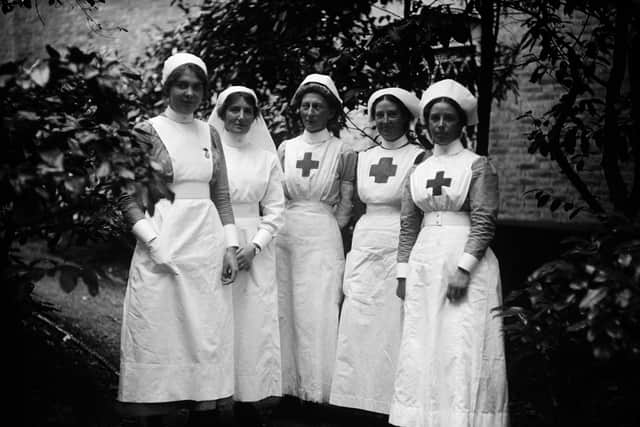Rare nursing pictures reveal Britain’s first angels of mercy


Nursing at the beginning of the First World War was still unregulated – any woman could call herself a nurse and many offered their services. A photographer around 1914 witnessed Mary, Princess Royal and later Countess of Harewood, doing exactly that.
But while the celebrities in their ranks were useful for wartime propaganda and to help promote the notion that suffering bestrode the classes, the reality was that most nurses were working-class women with no right even to vote.
Advertisement
Hide AdAdvertisement
Hide AdIn the first years of the last century, there had been thousands of untrained women working as civilian midwives and nurses, with no more status in society than that of domestic servants.


The war transformed all that. The sudden requirement to treat large numbers of wounded soldiers at the front and again back home created an army of “white angels” in spotless tunics.
Some became medical assistants and were given basic training; others were volunteers.
The only corps of military nurses to be recognised by the British Army was the Queen Alexandra’s Imperial Military Nursing Service. Those volunteers who not part of it had to serve instead with the French and Belgian forces.
Advertisement
Hide AdAdvertisement
Hide AdThe casualties were not confined to the battlefields. Immediately after the hostilities, Spanish flu – a pandemic not unlike the one today – killed millions, including many nurses who came into contact with it.


Rules on probity, meanwhile, were strictly enforced, with the sack awaiting any nurse who became engaged to a patient, let alone embarked on an affair.
Editor’s note: first and foremost - and rarely have I written down these words with more sincerity - I hope this finds you well.
Almost certainly you are here because you value the quality and the integrity of the journalism produced by The Yorkshire Post’s journalists - almost all of which live alongside you in Yorkshire, spending the wages they earn with Yorkshire businesses - who last year took this title to the industry watchdog’s Most Trusted Newspaper in Britain accolade.
Advertisement
Hide AdAdvertisement
Hide AdAnd that is why I must make an urgent request of you: as advertising revenue declines, your support becomes evermore crucial to the maintenance of the journalistic standards expected of The Yorkshire Post. If you can, safely, please buy a paper or take up a subscription. We want to continue to make you proud of Yorkshire’s National Newspaper but we are going to need your help.


Postal subscription copies can be ordered by calling 0330 4030066 or by emailing [email protected]. Vouchers, to be exchanged at retail sales outlets - our newsagents need you, too - can be subscribed to by contacting subscriptions on 0330 1235950 or by visiting www.localsubsplus.co.uk where you should select The Yorkshire Post from the list of titles available.
If you want to help right now, download our tablet app from the App / Play Stores. Every contribution you make helps to provide this county with the best regional journalism in the country.
Sincerely. Thank you.
James Mitchinson, Editor
Comment Guidelines
National World encourages reader discussion on our stories. User feedback, insights and back-and-forth exchanges add a rich layer of context to reporting. Please review our Community Guidelines before commenting.